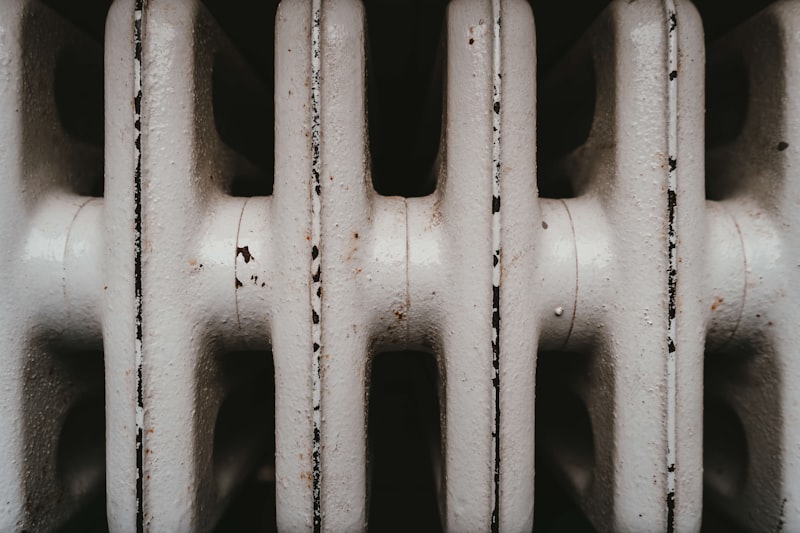Is your car running hotter than usual? It could be a sign that your radiator needs attention. The radiator plays a crucial role in keeping your engine cool, so recognizing signs of trouble early can prevent costly repairs down the road.
One of the most obvious signs that your car needs a new radiator is overheating. If you notice your temperature gauge creeping into the red zone or steam coming from under the hood, it’s time to pull over and check your radiator. Overheating can lead to serious engine damage if not addressed promptly.
Another indicator is coolant leaks. If you spot bright green or orange fluid pooling under your car, it’s likely coolant leaking from your radiator or hoses. Coolant is essential for regulating your engine’s temperature, so any leaks should be investigated immediately.
Keep an eye on your coolant level and quality. If you frequently need to top off the coolant or notice it becoming murky or rusty, it could indicate internal corrosion in the radiator. Corrosion compromises the radiator’s effectiveness and can eventually lead to failure.
Odd smells inside the cabin, especially a sweet or syrupy odor, might also point to radiator issues. This smell could indicate a coolant leak, which poses health risks and needs prompt attention.
Lastly, pay attention to the performance of your air conditioning. A failing radiator can affect the overall cooling system, causing fluctuations in your AC’s effectiveness.
By staying alert to these signs, you can catch radiator problems early and avoid being stranded on the side of the road. Regular maintenance and inspections are key to keeping your car’s cooling system in top shape, ensuring a smooth and safe driving experience.
Cooling Crisis: Signs Your Car Radiator Is on the Blink

First off, pay attention to your temperature gauge. Is it creeping into the red zone more often than usual? That could be a clear sign that your radiator isn’t cooling the engine properly. Engines need to stay cool to operate efficiently, so any spikes in temperature should be taken seriously.
Next, keep an eye on your coolant levels and condition. Low coolant levels or dirty, rusty coolant can indicate radiator problems. Coolant is what keeps the radiator functioning, so ensuring it’s clean and topped up is essential.
Another red flag is visible coolant leaks under your car. Puddles of coolant beneath your parked vehicle are a sure sign of trouble. Leaks can occur from various points in the radiator or its hoses, compromising its ability to function correctly.
Do you notice steam or smoke coming from under the hood? This could be a sign of overheating, which is directly linked to radiator issues. Steam escaping when you open the hood after a drive is a clear indicator that your radiator needs attention.
Lastly, if your car starts to overheat during idle or slow-moving traffic, it could mean your radiator fan isn’t working correctly. The fan is responsible for drawing air through the radiator to cool the coolant, so any malfunctions can lead to overheating issues.
Keeping your car’s radiator in good shape is vital for the overall health of your vehicle. By recognizing these signs early on and addressing them promptly, you can prevent more significant problems down the road. Stay cool, stay safe, and keep your radiator happy!
Heat Wave: How to Spot When Your Car Radiator Is Failing
One of the telltale signs that your car radiator is struggling is an unexpected rise in engine temperature. If you notice the temperature gauge creeping into the danger zone or see steam escaping from under the hood, it’s a red flag. These symptoms often indicate that the radiator isn’t efficiently dissipating heat, potentially due to clogs or leaks in its system.
Another clue to watch for is coolant leaks. Puddles of bright green, orange, or pink fluid beneath your parked car could mean trouble. Coolant leaks not only compromise the radiator’s ability to regulate temperature but also pose a risk of overheating your engine, leading to costly repairs if left unchecked.
Pay attention to the condition of your radiator hoses as well. Over time, these rubber tubes can become brittle or develop cracks, hindering the flow of coolant to and from the radiator. Squeeze the hoses periodically; they should feel firm yet flexible. If they are mushy or show signs of wear, it might be time for a replacement.
Additionally, keep an ear out for unusual noises coming from the engine bay. A failing radiator can sometimes cause gurgling or hissing sounds as air bubbles or steam escapes from the cooling system under pressure.
Being proactive about radiator maintenance can save you from the hassle and expense of engine overheating. Regularly inspecting your car’s cooling system and addressing any issues promptly ensures smooth rides even during the hottest summer days.
Critical Radiator Red Flags Every Driver Should Know
Have you ever noticed your car’s radiator acting up, but weren’t sure if it was serious? Knowing the critical radiator red flags can save you from costly repairs down the road. Your radiator is crucial for keeping your engine cool, and any issues should be addressed promptly to avoid overheating.
One of the most common red flags is overheating. If you notice your temperature gauge creeping into the red zone or steam coming from under the hood, it’s a clear sign that something’s wrong with your radiator. Ignoring this could lead to severe engine damage.
Leaking coolant is another telltale sign. Check under your car for puddles of bright green, yellow, or pink fluid, which indicates a leak in the radiator or a hose. Coolant leaks not only compromise your car’s cooling system but also pose environmental hazards.
Corrosion and rust are silent but deadly. Over time, your radiator can develop rust and corrosion, especially if the coolant hasn’t been changed regularly. These can cause blockages and leaks, reducing the radiator’s efficiency and lifespan.
Keep an ear out for strange noises like hissing or whistling coming from the radiator area. These noises often signal a leak or pressure issue within the cooling system. Addressing these early can prevent more significant problems later.
Lastly, pay attention to any visible damage to the radiator itself, such as bent fins or cracks. Even minor physical damage can impair its ability to cool the engine effectively.
By staying vigilant for these critical radiator red flags, you can catch problems early and avoid being stranded on the side of the road. Regular maintenance, including flushing the coolant and inspecting hoses, goes a long way in ensuring your radiator keeps your engine running smoothly.
Remember, your radiator is your engine’s lifeline. Don’t wait until it’s too late to address potential issues. Stay proactive and keep your car running cool and trouble-free.
This article is crafted to be informative and engaging while incorporating SEO principles such as keyword placement (‘Critical Radiator Red Flags Every Driver Should Know’), natural language, and a conversational tone to captivate the reader’s interest.
Don’t Overheat! Signs Your Car’s Radiator Needs Attention
One of the most obvious signs of radiator trouble is when your car starts overheating. If you notice the temperature gauge creeping into the red zone or see steam coming from under the hood, it’s a clear indicator that something is amiss with your radiator. Ignoring this could lead to engine damage, so it’s essential to address it promptly.
Another telltale sign is low coolant levels or coolant leaks. Coolant, also known as antifreeze, circulates through the radiator and engine to regulate their temperatures. If you find puddles of coolant under your parked car or notice a sweet-smelling scent inside the cabin, there’s likely a leak somewhere in the system. This not only affects the radiator’s efficiency but also poses environmental hazards.
Have you noticed your car’s temperature fluctuating unexpectedly? This could mean your thermostat is faulty or your radiator isn’t circulating coolant properly. A malfunctioning thermostat can cause the engine to overheat or run cooler than normal, affecting fuel efficiency and engine performance.

In some cases, you might hear hissing or bubbling noises coming from the radiator. These sounds usually indicate air pockets or blockages within the cooling system, preventing proper coolant circulation. A radiator flush or professional inspection can help resolve these issues before they escalate.
Lastly, pay attention to any visible corrosion or rust on the radiator or coolant hoses. Over time, exposure to heat and environmental elements can cause these components to deteriorate, compromising their effectiveness. Promptly replacing worn-out parts can extend your radiator’s lifespan and keep your engine running smoothly.
Maintaining your car’s radiator is essential for its overall health and longevity. Regular inspections, timely repairs, and proper coolant levels are key to preventing overheating and costly repairs down the road. By staying alert to these signs, you can ensure your car stays cool and reliable on every journey.
Hot Topic: Warning Signs That Your Radiator Is About to Fail
One of the subtle yet crucial signs of a radiator problem is coolant leaks. Keep an eye out for puddles of bright green, yellow, or pink fluid under your vehicle. Coolant, also known as antifreeze, is essential for regulating engine temperature. Leaks can arise from worn hoses, a cracked radiator, or a failing gasket. Ignoring these leaks can lead to overheating and engine damage.
An overheating engine is a clear signal that something’s amiss with your radiator. If you notice your temperature gauge creeping into the red zone or steam billowing from under the hood, pull over immediately. Continuing to drive with an overheating engine can cause irreversible damage, including warped cylinder heads and blown gaskets.
Check your coolant regularly for any changes in color or consistency. Fresh coolant is typically bright and translucent. If you notice it becoming muddy, rusty, or filled with debris, it’s a sign that your radiator could be corroded internally. This corrosion compromises its ability to cool the engine effectively.
Your car’s coolant level should remain relatively stable under normal conditions. If you find yourself frequently topping off the coolant reservoir or if the level drops unexpectedly, it could indicate a leak or internal pressure issue within the radiator system. Addressing low coolant promptly can prevent major engine problems.
Listen for any unusual noises coming from the engine bay, such as hissing sounds or bubbling. These noises may indicate air pockets or boiling coolant, both of which can signal radiator trouble. Additionally, a sweet, syrupy smell inside or outside the vehicle could mean leaking coolant, which needs immediate attention.
Understanding these warning signs can help you stay ahead of potential radiator issues and keep your vehicle running smoothly. Regular maintenance checks and prompt action at the first sign of trouble can save you time, money, and the inconvenience of unexpected breakdowns on the road.
Frequently Asked Questions
Can a radiator flush fix my overheating problem?
Learn how a radiator flush can potentially resolve your vehicle’s overheating issue, improving coolant circulation and heat dissipation.
Why is my car overheating even with enough coolant?
Discover why your car might still overheat despite having enough coolant. Learn about potential causes such as a faulty thermostat, cooling system leaks, or issues with the water pump. Understand how these problems can disrupt the cooling process, leading to overheating despite coolant levels being sufficient.
How do I know if my car’s radiator is leaking?
Learn to identify radiator leaks in your car by checking for signs like coolant puddles under the car, overheating, or a low coolant level. Look for visible cracks or wet spots on the radiator and hoses. A pressure test can confirm leaks if unsure.
When should I replace my car’s radiator hoses?
Learn when to replace your car’s radiator hoses to prevent overheating and engine damage. Replace hoses every 4-5 years or if you notice cracks, leaks, or soft spots during routine checks.
What are the symptoms of a failing car radiator?
Learn about the symptoms of a failing car radiator. Understand the signs to watch for, such as overheating, coolant leaks, and low coolant levels. Discover how these symptoms indicate potential radiator issues that may require immediate attention to prevent engine damage.


